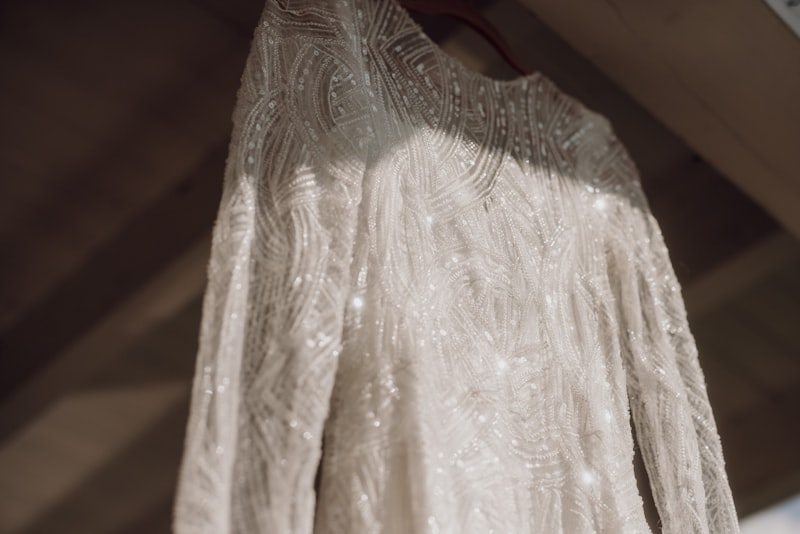Exploring the Historical Context of Wedding Apparel: A Journey Through Time
Exploring the Historical Context of Wedding Apparel: A Journey Through Time
Introduction
Wedding apparel has always been a significant aspect of matrimonial ceremonies, reflecting cultural values, social status, and personal tastes. The historical context of wedding apparel reveals fascinating insights into the evolution of fashion, societal norms, and the various influences that have shaped the wedding industry. From ancient traditions to modern styles, this article delves into the rich tapestry of wedding attire throughout history, examining how various factors have contributed to what we wear on our special day.
The Ancient Roots of Wedding Apparel
Historically, wedding attire has varied widely across different cultures and time periods. In ancient civilizations, such as those in Mesopotamia and Egypt, weddings were celebrated with elaborate garments that symbolized wealth and status.  For instance, brides often wore garments adorned with intricate embroidery and precious gemstones, signifying their family's prosperity.
For instance, brides often wore garments adorned with intricate embroidery and precious gemstones, signifying their family's prosperity.
Roman and Greek Influences
The Romans and Greeks contributed significantly to wedding fashion. In Ancient Rome, brides typically donned a white tunic called a stola, made of high-quality wool or linen. This garment symbolized purity and modesty. Similarly, Greek brides wore a chiton, which was a simple yet elegant garment made from a rectangular piece of cloth, often beautifully draped to enhance the bride's appearance.
Medieval Wedding Attire
As we moved into the medieval period, wedding attire became more elaborate and symbolic. Wealthy brides would wear richly colored gowns decorated with jewels, while common women typically wore simple dresses in muted colors. The introduction of the wedding ring during this time was also an important symbol, representing love and commitment.
Symbolism of Color
| Color | Meaning |
| White | Purity and Innocence |
| Red | Passion and Love |
| Blue | Fidelity |
| Green | New Beginnings |
This table illustrates how different colors have been associated with weddings throughout history. The choice of color played a pivotal role in conveying the bride's virtues and aspirations.
The Victorian Era and Modern Influences
The Victorian era marked a significant turning point in wedding apparel. Queen Victoria’s wedding to Prince Albert in 1840 popularized the white wedding dress, establishing it as a timeless tradition. This shift symbolized a departure from the norm, where brides usually wore their best dress, regardless of color. After this event, the white wedding dress became synonymous with purity and romance.
Twentieth Century Trends
The 20th century saw dramatic shifts in wedding fashion. The flapper era of the 1920s introduced stylish, less restrictive dresses that allowed for more movement, reflecting changing attitudes towards women’s independence. By the 1950s, traditional silhouettes dominated, but brides began to personalize their attire with unique designs and embellishments. Hollywood also influenced wedding apparel, with stars like Grace Kelly inspiring brides around the world to embrace classic elegance.
Modern Trends in Wedding Apparel
Today, the historical context of wedding apparel continues to evolve. Many brides opt for bespoke gowns that reflect their individual style rather than adhering strictly to traditional designs. The influence of globalization has led to a fusion of cultural elements in wedding attire. For example, brides may incorporate traditional motifs from their heritage while incorporating modern designs.
Inclusivity and Diversity
Moreover, the modern wedding apparel market is increasingly inclusive. Designers now create wedding attire for all body types, genders, and cultural backgrounds, reflecting a growing acknowledgment of diversity in society. This shift represents a significant change from historical norms that often dictated strict criteria for brides and grooms.
Conclusion
The historical context of wedding apparel is a testament to the cultural, social, and personal narratives that shape how we celebrate love. Understanding this evolution allows us to appreciate the significance behind each gown, suit, and traditional outfit worn during a wedding ceremony. As trends continue to evolve, future brides and grooms will undoubtedly draw from these rich histories to craft their own stories.
In conclusion, it's essential for modern couples to consider the historical significance of their wedding apparel choices. By embracing traditional elements while also expressing personal style, they can honor both the past and their unique love story. As you plan your wedding, remember to explore diverse options and consider how different elements of wedding apparel symbolize your values and heritage.
For those looking to dive deeper, consider these related topics for further exploration:
- The Significance of Wedding Rituals Around the World
- How Cultural Influences Shape Modern Wedding Fashion
- The Evolution of Grooms’ Attire Through the Ages
- Bridal Accessories: A Historical Perspective
Ultimately, the historical context of wedding apparel serves as a rich source of inspiration for couples seeking to create meaningful and memorable ceremonies. Embrace the past, celebrate the present, and look forward to a future filled with love and individuality.
